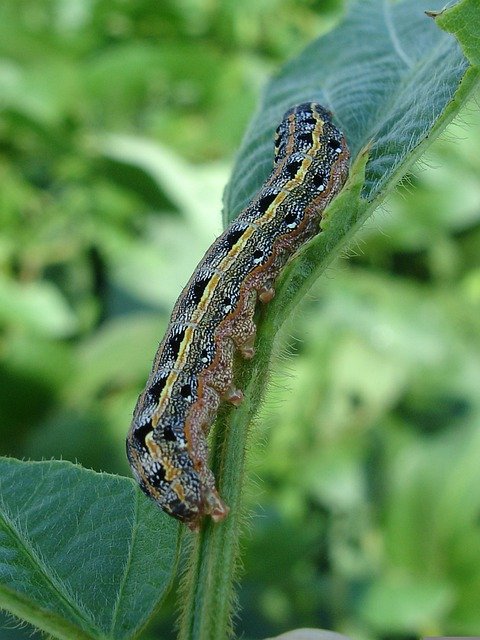August 2, 2024 – Texas A&M AgriLife Extension offers extensive resources and information on managing armyworms, a common pest affecting crops and pastures. Armyworms are caterpillars of various moth species. They can cause significant damage to crops, including corn, small grains, and forage grasses. Key species include: Fall Armyworm (Spodoptera frugiperda), True Armyworm (Mythimna unipuncta) Yellowstriped Armyworm (Spodoptera ornithogalli). Signs of Infestation: Chewed leaves with ragged edges, skeletonized foliage in severe cases. Presence of larvae on plants, typically in the early morning or late evening. Monitoring fields by regular scouting, check fields regularly, especially during the growing season.
Control Methods
According to Dr. Vannessa Corriher, Texas A&M AgriLife Extension Services, the control of army worms if the grass is being used for hay and is near harvest, then harvest early to prevent extra feeding damage. However, be aware that the caterpillars may consume the cut hay, so this is not always a wise option. Insecticide applications should be made early in the morning or late in the evening if possible, to ensure caterpillars come into contact with insecticide. During hotter parts of the day, caterpillars may be out of the canopy and avoid maximum insecticide exposure.
There are many insecticides that can be used to control FAW caterpillars. Pyrethroids are relatively cheap and readily available. These insecticides take roughly three days to achieve maximum effectiveness against small and large caterpillars. Pyrethroid insecticides tend to have a short residual period and can be washed off by rains. This lack of rain fast protection can be a problem with the recent weather and possible overlapping generations of fall armyworm caterpillars. Addition of a product like Dimilin (or generic products with diflubenzuron) can increase the residual control period to 10-12 days, eliminating caterpillars that emerge in that timeframe. Neither pyrethroids nor Dimilin will continue providing control if rain occurs though. Another fairly inexpensive option in Intrepid (or generic products with methoxyfenozide). This product will provide residual control for about 7 days, but it must be eaten to kill the caterpillar and is not rain fast. If rain is a continuous issue, the only truly rain fast options are products such as Prevathon, Vantacor, or Besiege. All of these products contain the active ingredient chlorantraniliprole, but Besiege also contains a pyrethroid. These products are absorbed by the leaf tissue and are rain fast upon drying. While these products are more expensive, they do provide excellent residual activity and will persist longer at the higher rate. For example, Prevathon at 14 fl-oz/ac will typically provide 14 days control, and a 20 fl-oz/ac rate will provide 20-21 days of control.
For additional questions about FAW control, please reach out to the Hopkins County Extension Office at 903-885-3443 or email me at m-villarino@tamu,edu.. Always use an insecticide according to the label. Texas A&M AgriLife Extension Service is not responsible for insecticide applications, damages, or other issues encountered.







